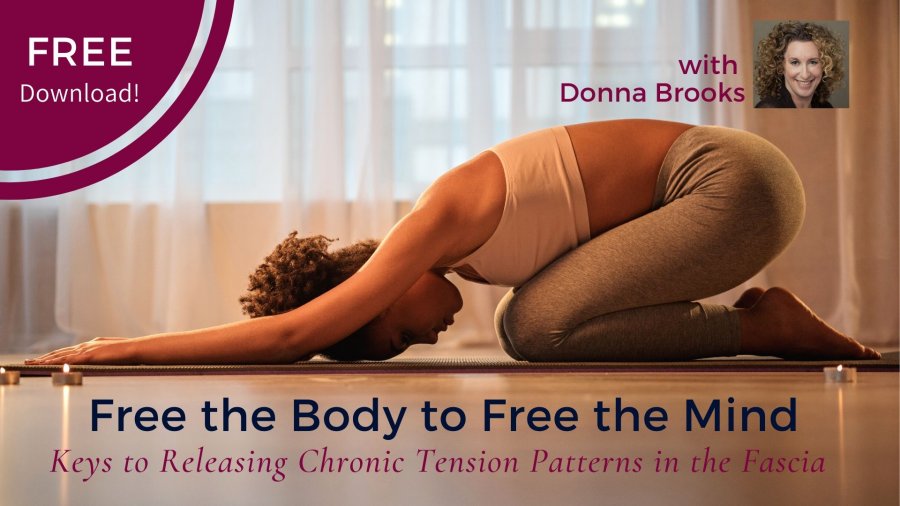Free Download! Free the Body to Free the Mind - Keys to Releasing Chronic Tension Patterns in the Fascia
Course Info
- Price:
- $0.00
Donna Brooks
 Donna Brooks is an ISMETA registered somatic movement educator and therapist and a certified Yoga therapist. She designs and teaches yoga-based therapeutic programs for diverse populations, especially baby boomers, the aging or injured, and people with chronic illness and chronic pain
She has...
Donna Brooks is an ISMETA registered somatic movement educator and therapist and a certified Yoga therapist. She designs and teaches yoga-based therapeutic programs for diverse populations, especially baby boomers, the aging or injured, and people with chronic illness and chronic pain
She has... 
Do we need to free the body to free the mind?
Traditionally, psychologists have focused on talk therapy to free us from the mental burden of the past. But the lingering effects of our experiences can etch a groove into our nervous systems that manifests itself in the form of chronic pain, tightness, or inhibited movement patterns.
In this free download, yoga therapist and Somatic Educator Donna Brooks explains that sometimes the best way to minimize the lingering impact of our experiences is to get out of our thinking minds and into our bodies, where those unhelpful patterns tend to settle. Donna shares how her own mind-body practice jolted her into sudden clarity around a long-term abusive relationship.
Like a bruise that never goes away, past experiences–emotional trauma, accidents or surgeries, even everyday stressors–are stored in the body’s fascial structure–our connective tissue matrix, Donna explains.
These experiences may not remain front of mind, but our bodies keep track by getting stuck in sometimes unexpected places. The result is often chronic tension patterns in the body that affects our whole system without us realizing it.
“When a muscle fiber constricts–a term we call binding–it's not just the muscle that's tightening,” Donna relates. It’s also pulling on the whole fascial network. The result is constricted tissue that lacks fluidity. This in turn affects the whole soft tissue system of the body--from muscles to tendons and the outer layer of bone.”
It’s not just emotional trauma that locks us into rigidity, Donna explains, we can also get rigidified from driving two hours to work in traffic or having a past injury that never healed as fully as it could.
So where does yoga fit in? Yoga can be a tremendous technique to free us from long-held residual tension patterns in the body, Donna notes. It helps to release fascial strain patterns in a number of different ways.
Donna points to current fascial research that shows how different types of pressure can help restore much-needed fluidity in both our tissues and movement patterns. Certain neuroreceptors in the fascia respond to the sustained pressure and elongation offered in a more traditional asana practice, for example. At the same time, the freer expression of Somatic work offers possibilities for tapping into the body’s innate wisdom.
“When we can't move fully and fluidly, we get binding and tension patterns through the whole fascial matrix,” Donna says. “And we're always shooting at a moving target because every day we're older and our relationship to gravity is changing. Age-related changes are also going to affect the moisture level in the body.”
Fortunately, once we learn how to work with the body, we realize that nothing is ever set in stone. Using somatic awareness and yoga we can literally free the body to free the mind.
“We can say that the body is permeable--it's not solid. There's a transparency to whatever exists that we don't see in our ordinary mind; it’s not just about flesh and bones,” Donna notes. “The authenticity of that transparency and the fullness of our physical and emotional lives together come from experiencing life viscerally in our structures.”
You may also enjoy Donna's course, The Role of the Fascial Matrix in Fostering Resilience and Strength.